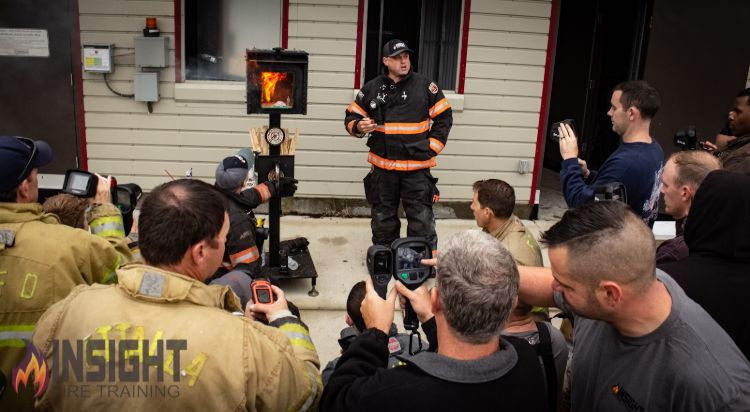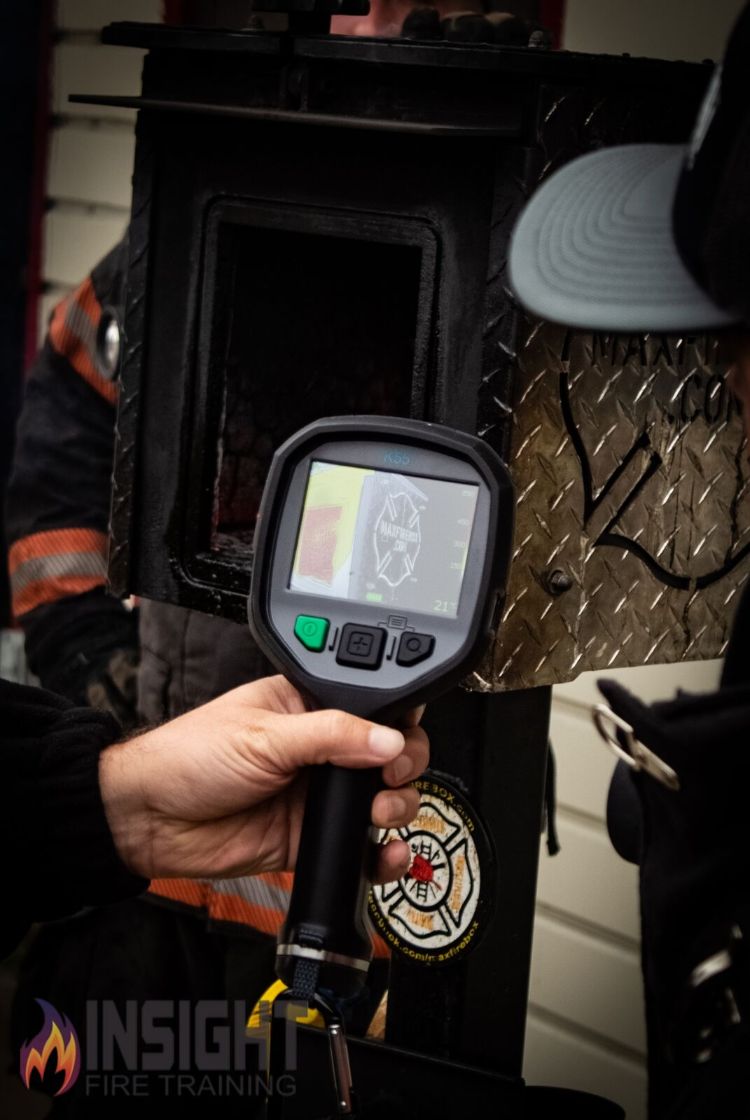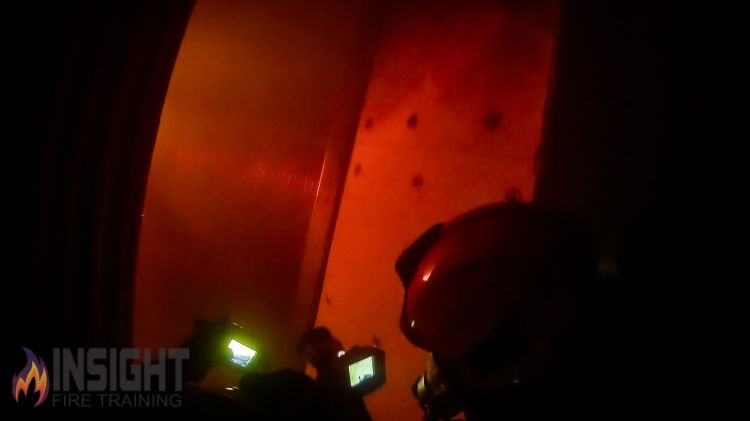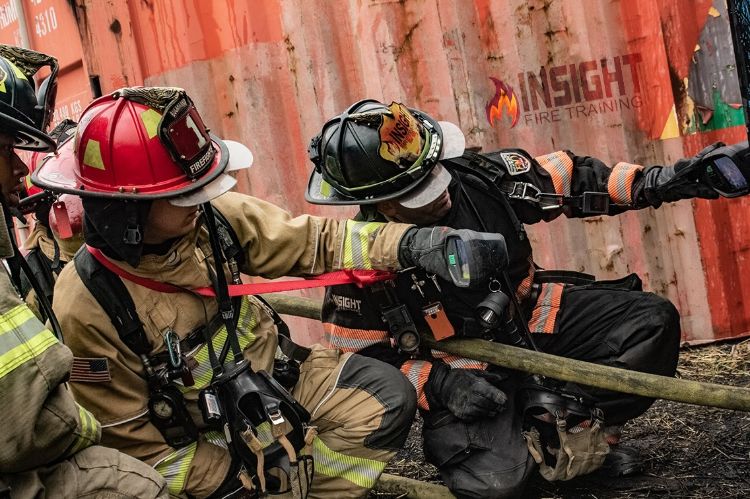When travelling to conferences or training weekends teaching thermal imaging to firefighters we are repeatedly asked which brand camera is the best? While everybody has their preferences, the more practical is “the one you have been thoroughly trained to use.” Sure, there are differences between color palettes, grips, and sensitivity modes but, that is an object focused mentality. How competently you apply the camera to your operations will mean more than the name the case bares.
Much of the United States fire service has failed in this area for the last couple decades. The technology integrated into the cameras has far outpaced our understanding and application. Think of the first camera your department purchased. How much training were you given? Did that training involve anything beyond the functions of the buttons? Were you given a learning scenario where the camera switched sensitivity modes? Were you just handed the camera during a live fire scenario? Now think of the last camera purchased, was it any different?
When we spend public funds on technology that will be used in a high stakes, high stress environment, time and money should be invested into training on its proper use. The camera can only help us save lives and property with proper training. If you want to change this for your department we can help, but here are a few easy steps you can take on your own.
Start In the Classroom
No need for death by powerpoint, but you need to start in a controlled environment with minimal distractors. At this time you can start to teach the functions of the different buttons. If you camera has multiple buttons and modes this is especially important. Teaching your firefighters how to recognize the camera is in an improper mode and how to go back to the correct mode for firefighting is extremely important. Further training on the uses of each mode or modes that should not be used need to be covered.
Also in the classroom, the layout of the screen needs to be discussed. Items such as spot temperature, sensitivity mode symbols, temperature bars, and battery indicators should be easily recognized by the user. These items could go unnoticed the first time if we were to push the students into a live fire training building with a facepiece obstructing their view, gloved hands prohibiting touch, and various levels of heat bouncing across the display to distract them.
Transition to Small Scale Fires
I have been questioned many times about the value of the Palmer’s House (a.k.a. dollhouses) since building my first one from plans provided by P.J. Norwood (Stop Believing, Start Knowing). The value is in the ability to move from the classroom to application of fire behavior without those previously mentioned distractions of protective equipment and fire conditions. Thermal imaging is no different. We need heat and varying stages of fire behavior to begin application. At Insight Training we proudly use the Max Fire Box as our small scale prop on a routine basis.

During this stage of the training, we can better show the camera switching sensitivity modes, discuss the color palette as it engages, and show the effect emissivity. While the students are moving around they will also start to see the limited field of view provided by the camera. If they are asked to increase and decrease their distance from the prop, they will also see what affects that has. While using your prop of choice be sure to discuss the various fire behavior cues displayed as well. Firefighters are able to see heat like never before through the eyes of a high resolution TIC in combination with the Max Fire Box before they enter a live fire training environment. However, firefighters must not rely solely on the camera, but add the camera to a solid fundamental skill set.
Live Fire Environment
This is the hardest step to come by for many departments. Much of the fire service doesn’t have a live fire training facility available at their location. However, it is a vital step in the training progression. The same distractions we were avoiding earlier are the reality of our operating environment. The end result must involve training to use the camera with those stressors.
Once we are in the live fire environment, don’t rush to full fire ground scenarios. Doing this will cause firefighters to revert to the actions they have always performed minus the camera. Again, allow firefighters to use the camera to view fire behavior, other firefighters, mannequins, and their surroundings in a zero visibility environment. Guide them through the same topics that were covered in the outside of the live fire training facility.
Don’t forget to encourage students to move with the camera. This will be especially important when moving to scenarios. Firefighters often struggle with how they want to carry the camera along with all the other necessary tools. Often cameras either end up being left behind or stored in a manner in which they can’t be used.

Tactical Integration
As Bob Carpenter states in Developing Firefighter Resiliency (Ch.3), “…the method learned first is the method first recalled.” If we want to change the behavior of our firefighters to include the use of thermal imaging we must break the skill into manageable pieces. This will allow firefighters the ability to reprogram their thought processes and reactions. The information the camera can provide them can be applied in a more narrow point of reference or a specific time during fire ground operations.
We must also once again begin in a manageable environment. Since you started with the camera’s functions and what it actually displays, time may now be spent on the particular skill you are enhancing with thermal imaging. Firefighters will not be asking questions pertaining to the meaning of a particular symbol or how to change modes on the camera. This keeps the class focused directly on the manner in which we are going to apply the camera to a tactic.

In Conclusion
The advice given above may not be detailed information about your camera. It also applies to many more areas of the fire service than thermal imaging. Department training pertaining to thermal imaging is unfortunately an afterthought in many instances. Take the time to reassess the thermal imaging training your department supplies or even the training you provide those under your supervision. How does it measure up?
We are always willing to help departments enhance their thermal imaging training. Insight Training provides a wide array of training thermal imaging training that begins with the basics and ends with implementation into the many facets of our job. Our curriculums can be presented to help you develop your training program or as your initial training program. Our instructors aren’t just firefighters, they are well versed in the science of thermography. This allows us to bring expert level knowledge to your department. If you are writing a grant consider including funding to host a peer-reviewed thermal imaging training curriculum.

